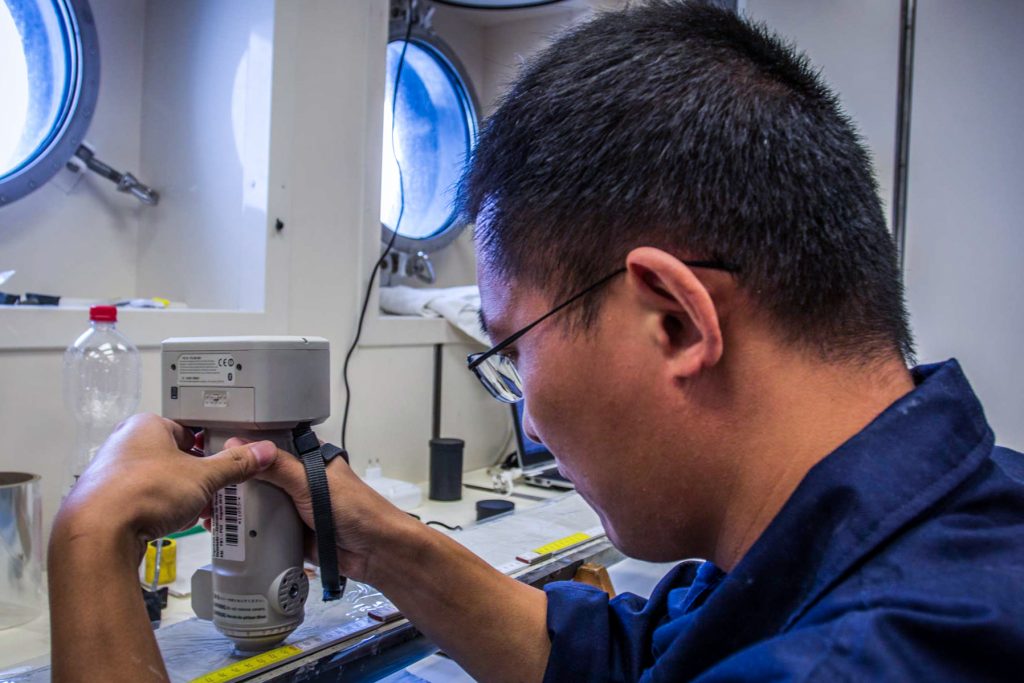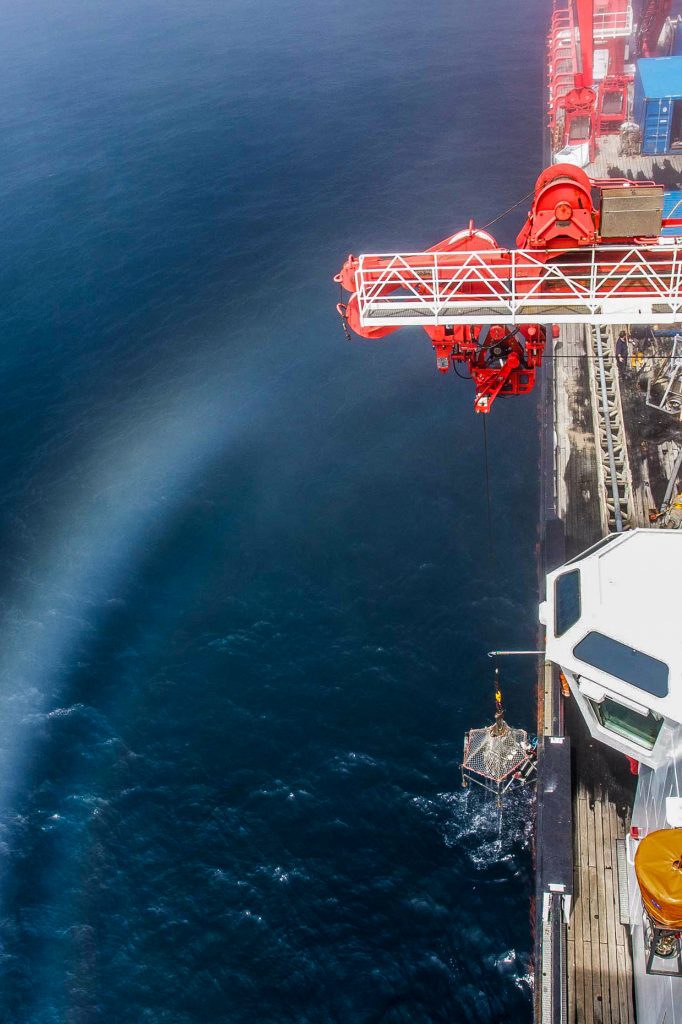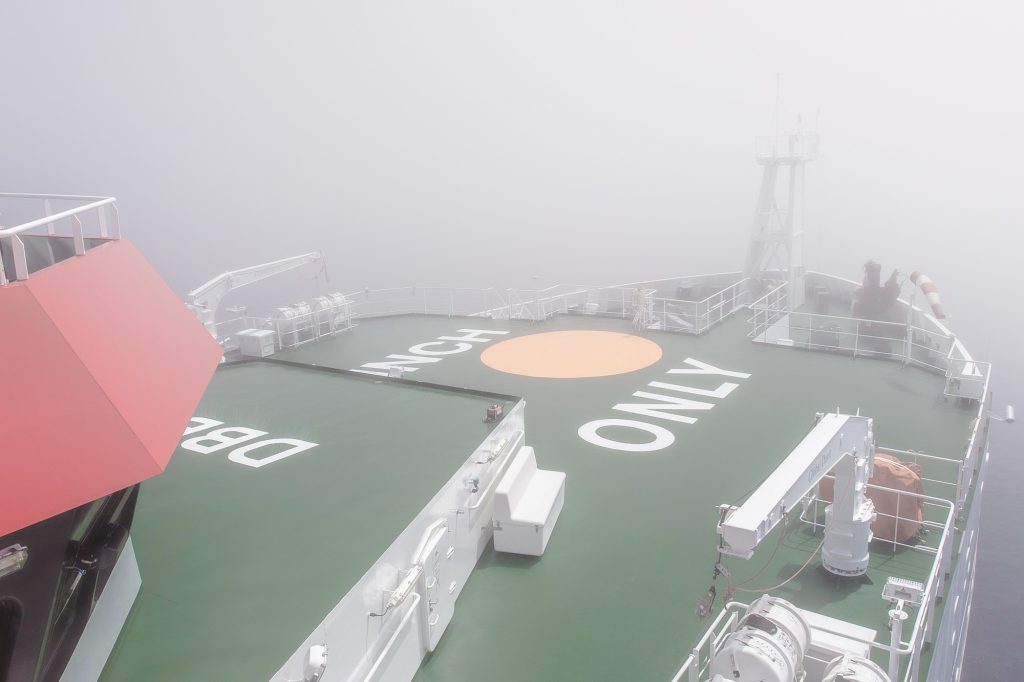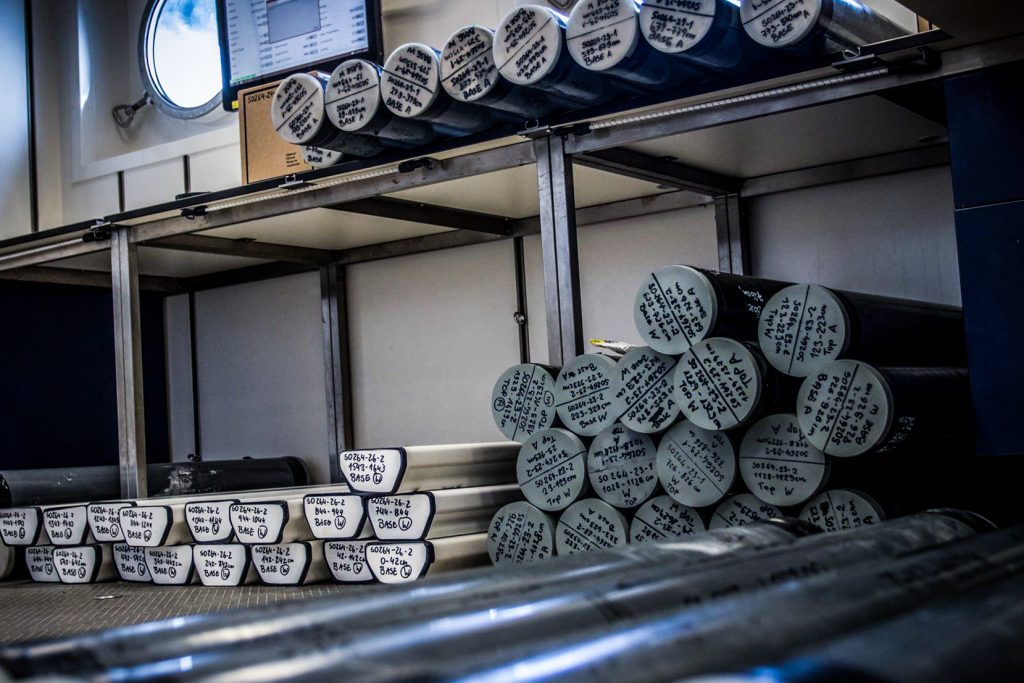Why do we send a ship with 70 people aboard to the middle of the North Pacific?
The main aim of cruise SO264 is to learn about the paleoceanography (oceanic properties and circulation of the past) and the paleoclimatology (climatic parameters and patterns of the past) of the Northwest Pacific. While learning about the climate of the past might be an interesting academic exercise – again – why do we care how the climate and the ocean looked like 1,000, 10,000, 100,000 or even 1,000,000 years ago? Isn’t the current climate change complicated enough? Should we really spend resources and care about climate that is no more?
Well, let me ask you a short question. How do we know, that the current climate changes we see on our globe are unusual, even of anthropogenic origin? How do we know that the planet is hotter than it should be? How do we know that CO2 is rising too fast? How do we know that glaciers are crumbling at an unprecedented pace? How do we know that this is not normal?

Jianxing Liu (FIO) analyzing a carbonate-rich core from 1771 m water depth for it’s specific color-spectrum. Photo: Thomas Ronge, editing: Steffen Niemann
The only way to put the ongoing changes into perspective is to analyze how the oceans and the climate evolved and interacted, before mankind injected gigatons of CO2 into the atmosphere, over an extremely short time period of roughly 150 years.
As there are no satellite records going back more than a few decades, no observations and instrumental records going back more than a few centuries and no tales about the climate going back more than a few millennia, paleoclimate researchers around the world have to resort to geological archives that stored the sought after climate parameters over geological timescales.
Embedded deep inside the oceanic deposits and sediment layers, the elusive world of microfossils, isotopes, trace metals, rare earth elements etc. tells us in high detail how the ocean and the climate looked like when mammoths were roaming the vast expanses of Eurasia and North America, the dramatic swings between glacials and warmer interglacials and most importantly how the ocean, the land and the atmosphere developed and shaped the planets climate.

The MUC circled by a fog-bow. Photo: Thomas Ronge, editing: Steffen Niemann
So, why are we currently trying to retrieve sediments from water depths down to 6,000 m in the North Pacific? Consider this, today the global ocean (below ~2000 m) contains 60-times the carbon of which is stored in the atmosphere. A tiny change in the oceanic carbon budget thus might yield huge consequences for atmospheric CO2 values. Today, the most carbon-rich water masses are found in the North Pacific in a water depth of ~1,500 to 3,000 m. Above these waters exists a thick layer of so-called intermediate-water that blocks the pathway of the deep-waters to the surface and thus prevents an equilibration of CO2 between the atmosphere and the deeper ocean. We don’t fully understand yet, how this intermediate-water “lid” evolved in the past. Was it open at times and allowed for the exchange of CO2?
We also try to unravel how the North Pacific CO2 sink evolved during glacials and previous interglacials, not too different from our own. In this respect, we need to understand, how well the North Pacific interacted with the Equatorial and South Pacific and the “Global Oceanic Conveyer Belt” in general. Today, the North Pacific is absorbing huge amounts of atmospheric CO2 due to a very efficient biological pump, which basically consists of two components. 1) Phytoplankton (teeny floating plants) carry out photosynthesis and absorb CO2 thereby lowering atmospheric CO2 and 2) dead phytoplankton-remains, rich in organic carbon sink and hence transfer absorbed CO2 to depth, where it is buried in the ocean deposits. In this respect, we also want to understand, how efficient the biological pump operated during the past, unaffected by anthropogenic influence.

Fog-bound R/V SONNE. Photo: Thomas Ronge, editing: Steffen Niemann
These questions are amongst many more that we tackle during our SO264 cruise. The data will ultimately help to understand how the North Pacific evolved in the past and maybe even more importantly, they might help to better understand how this crucial region might evolve in the near future. Most importantly, the data we are currently collecting aboard the fog-bound R/V SONNE will be fed into state-of-the-art computer models that are being used to predict the pathway of the ongoing climate change.
In a nutshell: We are currently working in an oceanic area, which plays a key role for the global climate. We try to understand how this region evolved in the past, in order to improve our predictions of how the North Pacific will react to the ongoing climate change.
Thomas Ronge Postdoc in marine geology at AWI

Thank you all for the important work you are doing!
An interesting artical about an important topic.
Thanks and all the best to everybody on board.
Hebi